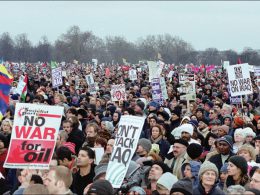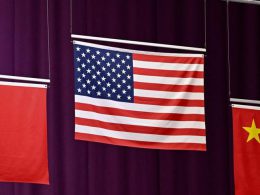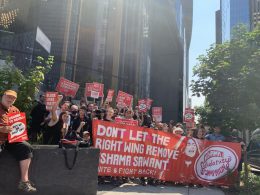Taksim Square has become a household name since the mighty uprising against the Erdogan government erupted on 31 May. We visited the protests in Istanbul at the start of June to extend solidarity and to learn about the situation on the ground.
We had the opportunity of speaking to many young activists and members of left parties and organisations, including the International Secretary of the DISK Trade Union, Kivanc Eliacik, a left-wing Kurdish Member of Parliament, Sebahat Tuncel (BDP), as well as the co-chair of the ODP Party, Bilge Seckin Centinkaya. We also witnessed massive police violence against protesters in Gazi Mahallesi, where water cannons, tear gas and flash bangs were used indiscriminately in this working-class and primarily Kurdish and Alevi neighbourhood.
The self-confidence, optimism, determination and dynamic of the in the main young tent residents in Gezi Park was contagious. Despite the massive police violence, they had managed to force the police to temporarily withdraw from the scene on the second day of the protest.
When we were there, they were correctly enjoying this victory. Young protesters proudly brought us around Gezi Park and Taksim Square, pointing out the many barricades built out of police vehicles and construction materials to protect the square from a potential new attack by police forces. In no time, they learnt how to minimise the effects of tear gas, and gas masks are widespread as well as leaflets explaining how to mix basic liquids to neutralise teargas.
A striking feature was the level of self-organisation at the camp. Here you have tens of thousands of people packed into a square, with perhaps around over a thousand camping overnight. Taking control of a large public space without any basic facilities inevitably poses many questions that are in the first place organisational – the distribution of food, water, the provision of first aid, the establishment of camp rules – but which have profound political implications.
We spoke with Ekin Medeni, one of the many volunteers at the park who is involved in the “Civil Initiative”, of 30-40 volunteers who organise aspects of the camp life. She explained how:
“There were only three tables here at the start, now there is a large space” where the Civil Initiative organises its work. We entered into this hive of activity – cupcakes with #gezi icing on one table, water-melons on another, sheets of papers on another, with people running around organising things. The work was carried out in shifts, with some people staying all night.
At that stage, the range of services available to protesters was impressive. Together with the free distribution of food and water and the organisation of regular cleaning of the camp, there was first aid available and even a crèche for those with young children. A principle established in Gezi Park itself is that there is nothing to be bought or sold. The volunteers only accept items donated to them and in turn donate them to the participants.
Active trade unionists from the left KESK (public sector) and DISK (private sector) trade unions and activists from left parties and organisations provide vital advice and support to the often inexperienced young protesters. They have a lot of experience given the structural and systemic oppression of democratic and workers’ rights in Turkey that has increased recently under the neo liberal, anti-worker Erdogan government.
The football ultras of Besiktas, Galatasaray and Fenerbahce enjoy a great deal of sympathy and authority because of their determined actions against police violence. Their football chants have been adopted to the new situation and turned into antifascist and anti- government chants and are one of the characteristics of the Gezi Park occupation. All of this is impressive considering that a survey of the protesters indicated that for 57% the Gezi Park protests are the first ones they have ever participated in.
With the attack of the Erdogan regime, all this is now threatened. Erdogan is facing extremely determined resistance. Having felt their power, Turkish working class and young people are not surrendering their control of public spaces without a fight. When we were there, many were actively studying the lessons of the Egyptian and Tunisian revolutions, seeking to avoid the setbacks experienced there. The question for the movement now is how it can be developed.
Where now for the movement?
By Paul Murphy MEP
 With the vicious crackdown on Taksim Square, the stakes have been raised. The Erdogan regime is fighting for its survival against an uprising of large sections of the population and has opted for repression rather than concessions to try to crush it. The earlier hopes of an easy victory and the euphoric attitude at Gezi Park have been crushed by police batons, water cannons and tear gas. Erdogan’s rhetoric has increased in aggression, promising that all protests will be brought to an end.
With the vicious crackdown on Taksim Square, the stakes have been raised. The Erdogan regime is fighting for its survival against an uprising of large sections of the population and has opted for repression rather than concessions to try to crush it. The earlier hopes of an easy victory and the euphoric attitude at Gezi Park have been crushed by police batons, water cannons and tear gas. Erdogan’s rhetoric has increased in aggression, promising that all protests will be brought to an end.
This is now a crucial time for the movement to have a broad discussion about the demands and strategy in order to try to bring Erdogan down. This is necessary to avoid a defeat that would likely see massive reprisals against protesters, an increase in state repression and a continuation of the neo-liberal policies of the AKP government.
It is clear now that the five demands of Taksim Solidarity (1. No construction in Gezi Park; 2. The removal of the police chiefs and Interior Minister implicated in the brutal police repression; 3. A ban on the use of tear gas; 4. No restrictions on the use of public spaces for protests; 5. Release of all those arrested in these protests) are not adequate on their own now to deal with this situation.
While they have proved to be a basis upon which a very broad movement could be developed, they do not answer the questions posed by current developments: How to defend protesters against violent attack; How to bring the Erdogan government down?; What should replace Erdogan?
The most immediate task is to organise resistance to the Erdogan offensive. This can only be done through massive mobilisations of hundreds of thousands of people. The calling of huge protests, together with appealing to all working people and urban and rural poor to mobilise against Erdogan’s authoritarian, anti-democratic and neo-liberal policies, is vital. Pressure must be built for an effective one day general strike to be organised to shut down Turkey for a day and push the authorities back.
As part of this mobilisation, the movement must attempt to undermine the support that Erdogan still has amongst important sectors of the population. This can be done by explaining the ‘divide and rule’ nature of his appeals to conservative Islamic values and how his right-wing economic policies have resulted in a continuation of massive poverty, attacks on trade union rights and increased inequality despite the economic growth in recent years.
There is a vital need to further develop the organisation of the movement. A striking absence, compared to Syntagma in Greece or Madrid in Spain, is that of mass popular decision-making assemblies. Although rallies regularly take place, these are organised primarily by one particular group and don’t have decision making powers. The result is that individuals not in political or other organisations, who now make up the majority of participants, are somewhat excluded from the decision making process.
The establishment of popular assemblies, together with city and country-wide democratic co-ordination and a major national conference of the movement is now urgently posed in order to co-ordinate the redevelopment of the movement. Self-organisation is not simply a means of organising resistance, it also gives a glimpse of how an alternative government of workers and poor could be organised.
The left parties and left trade unionists have a crucial role to play in this movement. They have previously felt this massive repression before. The lessons they have learnt have to be brought to bear with concrete proposals and leadership. The left trade unions should discuss how they can appeal to workers and youth who are members of the broader trade union federations whose leadership has shown reluctance towards supporting the protests. However, their members are equally affected by the neo-liberal and anti-social policies of the government. This will not be an easy task given the nature of the trade union leadership but a vital one in order to escalate the protest movements and to not hand the streets over to Erdogan and the AKP.
The experiences of the workers’ movement need to be brought together through the development of a new broad workers’ party of the left, encompassing the different trends, including the forces involved in the HDK. Within such a party, different groups could defend their viewpoints. A socialist programme that breaks with the dictatorship of the market that Erdogan represents would be vital in pointing to an alternative to the Erdogan government capable of delivering for the majority in society.












